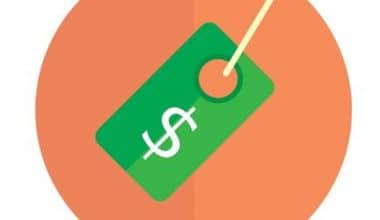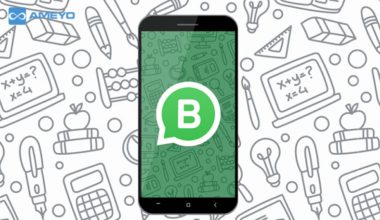A media monitoring service is extensively used in public relations to follow news releases and keep track of any data pertaining to your customer. One of the issues that many public relations professionals confront on a daily basis is tracking and analyzing media coverage. Today, I’ll define media monitoring, demonstrate how to conduct it, and highlight all of its benefits.
We have carefully selected the top media monitoring tools to assist people looking for media monitoring software.
What Is Media Monitoring?
Media monitoring enables you to keep track of mentions of your brand, products, and services in all media venues, including traditional print and broadcast, internet, and social. This involves both word and picture; the latter can be just as powerful as the former. A thorough media monitoring tool may scour the internet for news that is important to you, your company, your industry, and your competitors.
Every communications director should consider what media monitoring is and what it can achieve for their company. Understanding who is saying what about your brand, to whom, and how they feel about it is both critical and almost impossible without a media monitoring service in a hyper-connected world where fresh media content is generated in an uninterrupted flow.
In summary, media monitoring allows you to keep track of all of a company’s media coverage.
Why is Media Monitoring Important?
A media monitoring tool is essential for public relations professionals and businesses since it provides significant insights into public perception of your brand, marketing campaigns, products, services, or even competitors.
With over 95% of shoppers reading online reviews before making a purchase and 93% of local consumers using reviews to evaluate whether a local business is good or bad, reputation management is critical, and media monitoring is an excellent way to do it.
These are a few examples of how media monitoring might help your company:
- Keeping your brand’s reputation safe
- Crisis avoidance
- a better grasp of your audience
- Assessing the effectiveness of existing public relations and marketing initiatives
- Finding public influencers
- Investigate prospective media coverage opportunities.
We live in a world where practically everyone has access to the internet, and with positive and negative words having the ability to spread globally in a matter of minutes, it is critical to monitor the discourse surrounding your business in real time.
One of the most significant reasons for media monitoring is to protect your brand’s reputation.
How Does Media Monitoring Work?
Well, you understand what media monitoring is and how it may benefit your business, but how does it work?
In your organization, monitoring internet conversations is simple. Every mention will be collected in real-time by dedicated tools. The entire procedure can be broken down into simple steps:
- Choose the keywords you want to track. Media monitoring services scour the Internet for mentions of your keyword.
- Choose the analytics indicator that will be closely monitored based on your media monitoring goal. Many businesses monitor the performance of their content, their competitors, or industry data.
- Share the knowledge you gained through media monitoring throughout your organization.
Whether you develop a customizable media monitoring report or a dedicated Slack integration, make certain that all parties involved receive the information they require.
The success of your media monitoring project is dependent on properly establishing your project and understanding how to respond to the obtained insights.
Types of Media Monitoring Tools
The type of media monitoring tool you should choose is determined by your requirements and budget.
In general, there are three categories of media monitoring tools:
- Free for media monitoring tools.
- Affordable media monitoring tools
- Premium media monitoring tools
You can also locate tools that specialize in social media monitoring. Even if your primary focus is on increasing your social media presence, I recommend investing in media monitoring software that covers a wide range of sources.
#1. Free Media Monitoring Tools
Free media monitoring tools, such as Google Alerts, are an excellent option, particularly if you do not have the means to pay monthly subscriptions.
The tools will collect publicly available mentions but will not do anything else. You will be unable to access the analytics section, create reports, or set up custom notifications.
Even so, an inadequate media monitoring tool is preferable to none at all.
#2. Affordable Media Monitoring Tools
In this form of media monitoring tool, you set up your project (a professional agent may assist you) and immediately receive all of the data you require.
The dashboard contains all of the indicators required to analyze the health of your brand. You can apply numerous filters to your project to receive the most actionable set of data. You can, for example, filter by date, influence, source of mention, or language.
Sharing is another option that you may find handy in media monitoring tools. It should be simple to add new users to the project and export data in the form of a report.
The media monitoring tool will gather all publicly available mentions and provide data on the following:
- reach of mentions
- sentiment analysis
- volume of mentions
- most active regions for social media interactions
- the most well-known public profiles
Also, with the assistance of a paid media monitoring service, you should be able to generate PDF reports, combine the tool with external communicators such as Slack, and configure the most suitable alerting system.
#3. Premium Media Monitoring Tools
Professional media monitoring tools are expensive and only available to large corporations.
The primary distinction between paid and premium monitoring tools is that premium monitoring tools include the services of a specialized consultant. You are not required to do your own analysis of the results. Some of them also cover print media and allow you to create media lists. The media lists contain the contact information of journalists and other news sources who would be delighted to receive your press releases.
Media Monitoring Tools
A sophisticated media monitoring tool is required to fully utilize all of the benefits of media monitoring. The following is a list of the best media monitoring tools on the market.
We offer a diverse set of tools from which you can select the one that best meets your requirements. You can select from a powerful and reasonably priced media monitoring service, an enterprise solution, or a free tool that will alert you to publicly available mentions.
#1. Brand24
Brand24 is one of the most powerful and reasonably priced tools on the market. This media monitoring service has a plethora of features that will assist you in your daily work. Furthermore, the features are housed under a user-friendly dashboard.
Brand24 provides a variety of filters, such as sentiment, influence, and amount of interactions.
Also, you may sort the mentions in the Brand24 dashboard by importance. The domain, interactions, and other factors are used to determine their importance.
Brand 24 will compute AVE, which will provide you with an estimate of the worth of your earned media.
#2. Brandwatch
Enterprise clients can use Brandwatch as a media monitoring tool.
This media monitoring tool includes powerful analytics capabilities. Not only will Brandwatch collect and analyze data in real-time. They created Vizia, a media intelligence platform that will provide you with actionable information to help you take your organization to the next level.
Pricing for Brandwatch is available upon request.
#3. Google Alerts
Google Alerts, on the other hand, is an alternative to the tools outlined above.
It is a free tool for monitoring media. The tool will collect publicly available mentions of your predefined keyword and provide you a report through email.
However, this media monitoring tool can only do so much. It does not support analytics and does not allow you to build reports. The tool’s usefulness is rather limited.
A free media monitoring tool is Google Alerts.
#4. SEMrush
SEMrush is an SEO tool that includes media monitoring as a component.
It’s an intriguing pairing. Choose SEMrush if you’re primarily interested in tracking unlinked brand mentions and developing your SEO strategy.
Keep in mind that the tool’s scope is limited to locating brand mentions that can be used to improve your SEO positioning. It will be difficult to exploit for public relations purposes.
SEMrush begins at $99.95 per month. A free trial of the media monitoring tool is available.
#5. Sprout Social
Sprout Social is social media management software with an emphasis on social media monitoring.
You can incorporate social listening into your strategy to uncover the most useful insights that will help you improve your online presence.
Social media management will assist you in your daily tasks. You will be able to schedule posts on key social media platforms such as Twitter and Instagram. You can also monitor campaign results, respond to incoming communications, and generate social media reports. Sprout Social is the greatest social media monitoring software available.
Price: This social media monitoring tool starts at $99 a month and includes a 14-day free trial.
#6. Prowly
It is a unique listening tool. Prowly will assist you in tracking press releases and managing your media lists. It’s an excellent tool for any public relations professional who is more interested in dealing with media outlets than in tracking their Twitter, Instagram, or Web sources.
Prowly can assist you with managing your media connections, owned content, and press releases.
Price: The base package starts at $210 per month, with a free trial available through the tool.
#7. Tweetdeck
One of the Twitter-specific social media monitoring tools is Tweetdeck. Several Twitter accounts can be managed from a single dashboard, and this social media channel can be continuously monitored.
You can examine all of the data in four different columns and receive a quick snapshot of Twitter activity.
Tweetdeck is a free media monitoring tool
What Should You Monitor?
To ensure the success of your project, you must monitor the appropriate keywords. A competent media monitoring tool will assist you in separating the wheat from the chaff and obtaining the most actionable findings.
So, what should your media monitoring project include?
#1. Yourself
Always keep an eye on your brand, regardless of the media monitoring tool you use. Follow your brand through various businesses and news websites.
Monitoring your organization will assist you in determining who is speaking about you and what they are saying.
You will determine who your most ardent supporters and adversaries are. This insight will assist you in targeting your efforts and keeping an eye on any content provided by detractors. Their mentions may precipitate a crisis.
It is critical to keep track of your firm throughout time. You will be able to create benchmarking measures this way. Benchmarking provides context for all of the data you’ve gathered.
#2. Competition
Whether you are an industry leader or a newcomer, you must be aware of what other organizations are doing.
Every novice understands how crucial it is to observe what the big fish are doing and what the secret to their success is. Even if you wish to disrupt the market, you must first understand what you are up against.
Existing industry leaders should keep an eye on all other businesses and clients that wish to take their place.
#3. Industry
If you want to succeed, you must be aware of what is going on in your sector. Is there anything new you should be aware of?
You’ll be the first to hear about any new developments thanks to media monitoring.
Which Media Sources Are Covered by Media Monitoring?
Formerly, media monitoring was limited to print and television media. Everything changed with the advent of the Internet. You must now collect every mention of your organization and industry in order to make the most informed selections. Even if they exist on a platform you’ve never used before.
Where should you look for interesting content?
#1. Online
The majority of web sources are covered by all cloud-based media monitoring tools. The scope of monitoring and the amount of project mentions are determined by the media monitoring software of your choice. Brand24, for example, tracks blogs, forums, online news sites, podcasts, newsletters, and other publicly accessible internet sources.
#2. Printing media
Newspapers and periodicals account for a sizable share of media monitoring. Print media is still regarded as a significant source of information by some target populations. The good news is that most newspapers and magazines have online editions, making it simple to track them with an online media monitoring tool.
#3. Broadcast
Streaming services pose a significant threat to television and cable networks. But, television still has a significant advantage over Netflix and other alternatives. The same is true for the radio. Many of us have already forgotten about radio, although it touched the majority of the American people.
#4. Using social media
Your project should include social media monitoring as a key component. Numerous discussions about your sector or organization will take place on social media platforms such as Facebook, Instagram, and Twitter. Yet, don’t overlook other social media networks! YouTube is now the second most popular search engine. It is critical to appear in their search results.
Social media monitoring will assist you in locating and participating in relevant conversations regarding your organization. This is known as social listening. You will be able to track the effectiveness of your campaigns, determine which types of content generate the highest levels of interaction, and calculate the earned media value. It is critical to select a social media monitoring tool that gathers mentions in real-time.
Is Media Monitoring Necessary?
Once you’ve discovered the benefits of media monitoring, another issue arises: is media monitoring a viable solution for your company? Will it provide any value that justifies the investment?
From startups and small and medium-sized enterprises to huge organizations and governments, media monitoring will assist a wide range of business entities. Many public relations and communications professionals cannot envision their jobs without a specialized social media and news monitoring tool.
#1. SME and start-up media monitoring
Small and medium-sized businesses and start-ups are primarily concerned with increasing brand recognition and creating a community around their brand. Real-time media monitoring is one of their most essential characteristics. Furthermore, their preferred tool should include social media monitoring.
They can stay on top of things by monitoring the media.
Monitoring all mentions of their brand, product, or service can provide numerous benefits, including:
- developing consumer relationships by finding and reaching out to your target audience through various means directly
- Increasing brand exposure through interaction with your target demographic
- defending your brand’s reputation by detecting negative references Early measurement of your hashtag marketing efforts’ reach
- discovering hot hashtags to boost your social media presence
#2. Enterprise media monitoring
Big firms and companies should take a different strategy to media monitoring.
Businesses typically receive far more attention than SMEs and startups. As a result, they are uninterested in analyzing the results mention by mention. Companies require an overview of their media coverage as well as sophisticated analytics.
Your overall business strategy will benefit from cloud-based media monitoring software. You will benefit from media monitoring if:
- Never miss out on industry trends so that you may stay one step ahead of your competitors.
- be mindful of any negative references that may harm your brand’s reputation
- Monitor your competitors’ behavior and marketing campaigns.
- Analyze client feedback to obtain the most useful and actionable information.
#3. NGO media monitoring
For NGOs and advocacy groups, media monitoring can be an effective tool.
Brand awareness and brand reputation are critical for this type of organization. Brand recognition allows you to reach a larger audience with your content. The more people who are aware of the problem you are attempting to solve, the more you will be able to do about it.
A cloud-based media monitoring technology will assist you in tracking conversations across all news sources and social media channels.
Trust is everything for non-profit communications professionals. You must not just closely watch what people say about your organization, but you must also be aware of what your partners and suppliers are up to. Their brand reputation problem may unintentionally harm your company.
What is the Cost of Media Monitoring?
The cost of media monitoring software is far more complex than you may believe. The fees for using the tools are straightforward. The more features you desire, the more you must spend on the tool. Most media monitoring tools provide a 14 or 30-day free trial period.
Price becomes more difficult when we take into account factors such as:
- Opportunity cost
- Time.
The expense of missing out on leads or opportunities to earn more is referred to as opportunity costs. It could be something like:
- Loss as a result of a potential PR disaster or a poor brand reputation
- Costs incurred as a result of a lack of competitor analysis
- The cost of lost leads
Loss due to poor customer service and disgruntled customers switching to competitors
When it comes to time, media monitoring saves you time by gathering all of the information about your online presence, rivals’ outcomes, and your industry in one location. You no longer have to manually search the entire Internet for data. These tools take care of it for you.
Tips From Media Monitoring Experts
Now that you’re familiar with media monitoring and certain basic practices, it’s time to go over some more information. Here are a few of our recommendations as media monitoring experts. They will set you apart from the competition and enable you to become a power user of tools, taking your monitoring plan to the next level!
#1. Create alerts
Most media monitoring tools allow you to establish alerts and notifications for specific occurrences in your projects. Brand24, for example, sends you daily messages by default, but you can also configure Storm Alerts. These alerts will warn you if there is a significant increase in mentions in one of your projects.
These Storm Alerts for public relations can assist you in promptly identifying and resolving a public relations disaster. They can be used by social marketers to implement real-time marketing.
Try to see if your preferred media monitoring tool, has a mobile app. Install the app on your mobile device to receive instant push alerts when new mentions are made.
#2. Keep an eye on things in the target language.
Many marketers make the mistake of not monitoring in their own language, especially if they are targeting a local market.
You can then filter out the results that aren’t relevant to you.
It is critical to remember declension when monitoring in the local language. Provide all possible pronunciations of your brand to avoid missing out on any mentions.
#3. Keywords Monitoring
You should not only be interested in establishing monitoring initiatives using your brand name, but you should also identify some keywords and key phrases for your market niche.
For example, if your firm is a social listening app, you’d like to have a project for monitoring the phrase “social listening”.
Why? First and foremost, you will be able to identify current competitors and uncover new and emerging competitors. Second, you might look for possible brand ambassadors (more on that in point 6). Finally, you may supplement your link-building campaign using discovered keyword mentions.
#4. Use media monitoring to supplement your hashtag campaign.
You may improve your hashtag strategy by following people who are actively talking about your business.
You can find out what hashtags influencers are using by monitoring social media and following them.
#5. Determine who the most prominent people in your niche are.
Potential brand ambassadors might be found within the app with tools like Brand24. If your approach incorporates influencers, you should employ media monitoring to find people who frequently discuss your brand or market segment.
Influencer marketing has various benefits, and if you want to participate in this sort of advertising, media monitoring tools will be really useful.
#6. Provide the data to your coworkers.
“Sharing is caring,” as some say. It is a component of internal marketing. Your coworkers miss a lot of publications that you acquire by monitoring social media and other websites.
Sharing success stories about your brand with other employees enhances morale and overall job satisfaction.
Conclusion
You now understand what media monitoring is, why it is vital, and how to use it to safeguard your brand’s reputation and increase media exposure.
Recall that media monitoring isn’t just for public relations pros.
Whether you’re a tiny business or a large corporation, your entire organization should be focused on monitoring media mentions and mentions of your brand and taking action as appropriate.
Now it’s your turn:
How do you use social media monitoring in your business? What tools did you employ? What worked and what didn’t work? Please let me know by posting a short remark below.
- REMOTE MONITORING: What It Is, Application, and Jobs
- COMMUNITY RELATIONS: Benefits, Types, and Full Job Description
- MONITORING SALES PERFORMANCE: How to track Sales Performace (+Quick Tools)
- HOW TO BECOME A SOCIAL MEDIA MANAGER: Free & Easy Steps
- EMPLOYEE MONITORING SOFTWARE: Best Monitoring Software 2023






